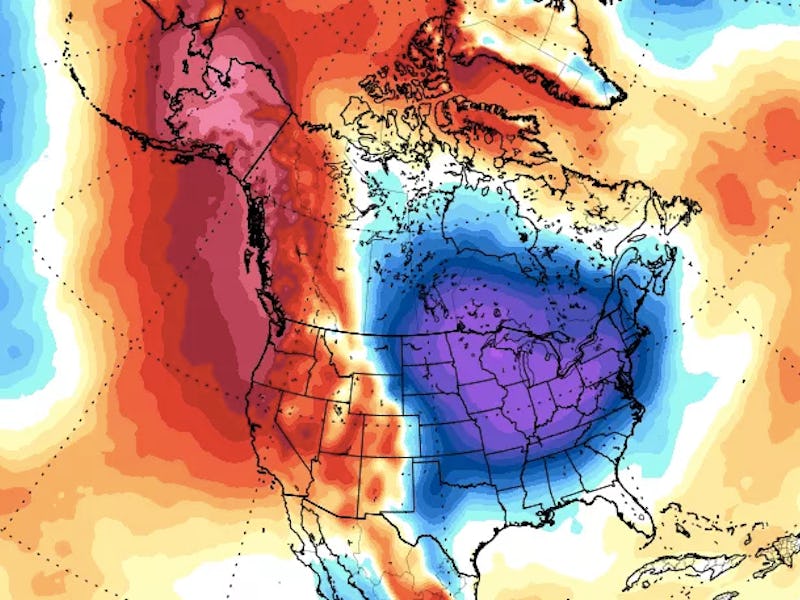Why Is It So Cold Right Now? Blame the Winter Dipole
It's a climate change phenomenon.

On Thursday evening, President Trump got on Twitter to mock all the countries attempting to prevent global warming, his rational being that the U.S. is about to experience one of the coldest New Year’s Eves on record.
“In the East, it could be the COLDEST New Year’s Eve on record. Perhaps we could use a little bit of that good old Global Warming that our Country, but not other countries, was going to pay TRILLIONS OF DOLLARS to protect against. Bundle up!” he said.
He got the second part right — the North Eastern U.S. is indeed headed for one of the coldest snaps in decades — but the first part of his claim is entirely off base, since this cold spell is likely being caused by global warming.
The extreme cold phenomenon that’s currently enveloping New York, Massachusetts, Michigan and more is being caused by a stuck weather pattern that scientists have started to call the North American Winter Temperature Dipole.
The Dipole is a term used to describe a newish weather phenomenon in North America where we see high temperatures and dry weather in the West (hello, California wildfires) and simultaneous extreme cold in the East. A jet stream, a weather term for a fast-moving air pattern that’s perfect for storms and also divides warm and cold air, moves north in the western half of the nation and then plunges into the Eastern U.S., resulting in the dramatic temperature disparity we see on each end of the country.
Scientists at Columbia University’s Lamont-Doherty Earth Observatory began studying the weather pattern in 2016, inspired by their observances that the warm western temperatures were occurring simultaneously to polar vortexes in the east in 2013-2014 and 2014-2015. Using climate module simulations, they found that the the occurrence and severity of warm-West/cool-East events have increased significantly between 1980 and 2015, and they believe it’s linked to climate change.
You can have increasingly cold winters and global warming too, according to these graphs from Columbia University's Lamont-Doherty Earth Observatory. p.p1 {margin: 0.0px 0.0px 0.0px 0.0px; font: 11.0px Helvetica; -webkit-text-stroke: #000000} span.s1 {font-kerning: none}
In his climate blog, study author Daniel Swain outlined the various factors contributing to the creation of the North American Dipole. “To date, the strongest evidence appears to implicate unusually warm ocean waters in the tropical western Pacific, which can trigger a hemisphere-scale wave pattern favoring an enhanced subtropical ridge near California,” Swain says.
Swain also says that a loss of arctic sea ice could be contributing to the climate that spurs this phenomenon. Unfortunately, the ice is melting too damn fast for anyone to verify if that’s true. “The Arctic is now warming more than twice as fast as the rest of the world, and sea ice has been disappearing at a greater rate than had projected by climate models,” he says. “A rapid rate of change that has complicated scientific investigations into high-latitude linkages.”
But don’t worry, this phenomenon won’t last forever, according to the Columbia research team. “The co-occurrence of extreme western warmth and eastern cold will likely decrease in the future as winter temperatures warm dramatically across the continent.” And we’ll have global warming to thank for that too.